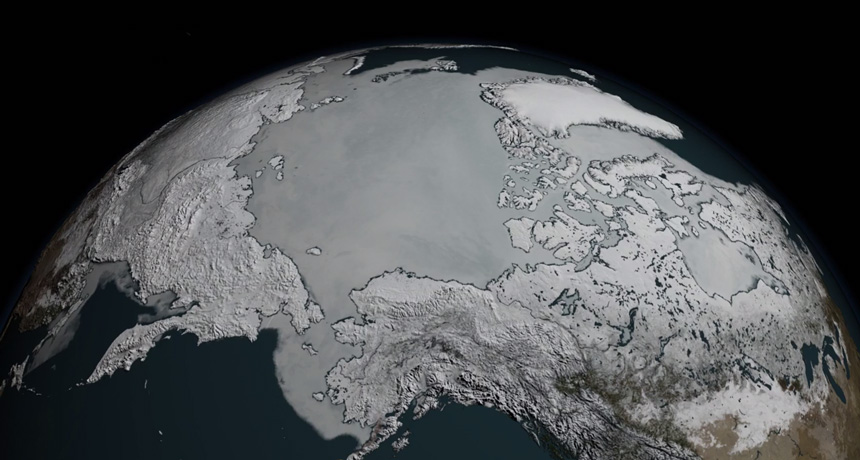Arctic sea ice hits record wintertime low

This year's maximum extent of Arctic sea ice, reached March 7 (shown), is the smallest peak extent ever seen.
L. Perkins/NASA Goddard Scientific Visualization Studio

This year's maximum extent of Arctic sea ice, reached March 7 (shown), is the smallest peak extent ever seen.
L. Perkins/NASA Goddard Scientific Visualization Studio